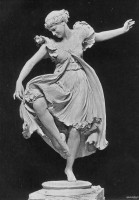
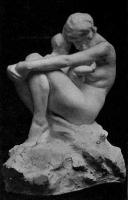
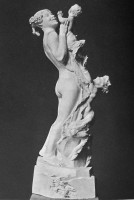 Versions of the Joy of Life.
Versions of the Joy of Life.
L is for Life, and allegorical statues of Life tend to be ‘Life and something else’, or some specific quality of Life. Thus we have The Joy of Life, three examples of which are above. The one on the left, by Hamo Thornycroft, shows a girl dancing, dance of course being an example of a joy of the present, thus a joy of life rather than, say of remembrance of things past. William Reid Dick’s rendering of two decades later shows a mother and infant, engrossed in each other. And another example is shown above right, with two younglings – the nude female is a naiad, and the infants are fauns, thus a more primeval, urgent, pagan Joy of Life. So far as the young mothers go in these latter two works, this is the Joy of New Life, and again, it is an immediate joy, of the moment. Another such mother and child example is below left, and is in fact called New Life. Below right, a panel called the Morning of Life, rather twee, by Miss Ellen Rope, not at her best.

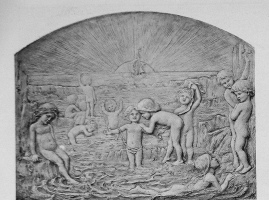 New Life, and Morning of Life .
New Life, and Morning of Life .
Here is a group called Love and Life, showing an embracing couple, and next to it a French work called Summer and Life on a similar theme, rather more overtly sensual, as we might expect. Similar works are shown on the Allegorical figures of Love page.
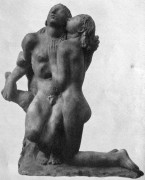
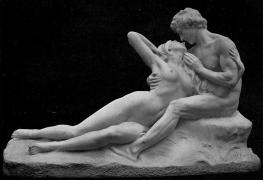 Allegories of Life as embracing couples.
Allegories of Life as embracing couples.
Life contrasted with Death is a not uncommon theme for religious and funerary works; the picture below left is called The Angels of Life, Death and Resurrection, with Life as the angel to the lower right, holding a flaming torch, so commonly shown extinguished and upturned on monumental tablets. Below right is a panel of Life’s Light and the Soul, the latter, by convention, being nude, and the light being the angel. Most frequently found on church monuments of around 1800.
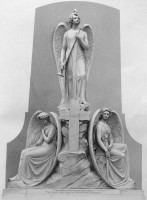
 Allegories of Life associated with Death.
Allegories of Life associated with Death.
The dancing figure above recalls other ideals of Life as a dance, as in the figure below left, called Rhythms of Life. An association with music is also found, as in the example below right, The Harp of Life.
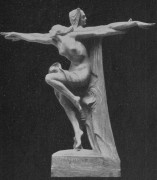
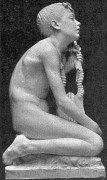 Allegory of Life associated with Dance and Music.
Allegory of Life associated with Dance and Music.
This roundel shows a theme common in painting, referring to Life in the sense of the different Ages of Man, from infant through vigorous youth to older age, and is called Life's Circle. The sculptor was Alfred Turner.
Finally, as a sculptor’s work of sculpture, we recall the story of Pygmalion and the Statue, most beautifully rendered in paint by Edward Coley Burne-Jones, where the sculptor, having made a perfect female statue, falls in love with it, and has the good fortune that Venus, Goddess of Love, made the statue into a real girl. The statue depicted below, called From Stone to Life, is William Calder Marshall’s rendering of the moment the statue comes to life and steps down from her pedestal, the sculptor’s mallet discarded by her feet.
Back to Allegorical sculpture - K // Onward to Allegorical sculpture - M // Full Alphabet of Allegorical sculpture
Sculpture in England // Sculptors
Visits to this page from 1 Oct 2013: 6,555